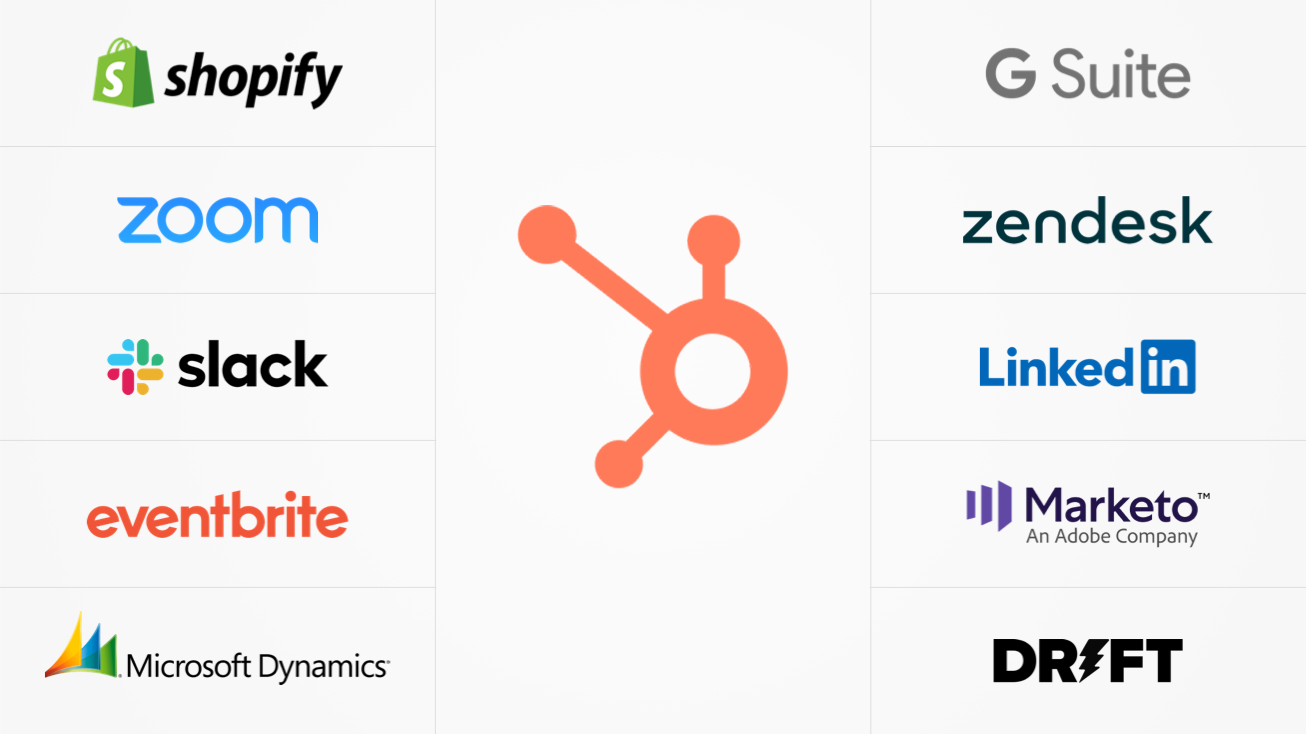Lead scoring. It’s one of those all-too common “Wish we had it, but we don’t” tech features that so many businesses struggle with.
Whether you’ve been considering lead scoring for a while or not—or, as in so many cases, you’ve had it in place for a while (but it’s not working very effectively)—it’s not something to be overlooked.
In the best of cases, a good lead scoring system might just be the key to maximizing the impact of your marketing program at each and every stage of the marketing funnel.
But at its worst, when it’s not set up properly or not maintained, lead scoring can actually be more of a dead weight than an asset.
No need to fear: we’ve got your back. We’ve set up so many HubSpot lead scoring systems for businesses across industries it’s become something like second nature for our team.
Here’s some of our best advice for implementing HubSpot lead scoring for your site, so you can be sure you’ve got your lead scores set up for success from the moment your users make first contact.
What is lead scoring?
Lead scoring is the process of assigning “scores” to users based on actions they take within your marketing ecosystem.
The term is often used in the context of actions taken on-site or within a CRM, but a “lead score” can actually encompass the fuller, bigger picture of a user’s engagements with your brand.
Positive actions result in positive scores; negative actions… well, you get the picture.
For example:
- User clicked on one of your social media posts? Let’s call that 5 points.
- Visited a web page? Another 5 points.
- Downloaded a gated content piece? Now we’re getting serious. Let’s call that 10 points.
- Filled out a form on your site? Bingo—that’s a big win. 50 points.
With this system in place, you can quickly determine which combination of actions yields the most valuable, most “ready to convert” leads among your marketing contacts.
On the contrary, you can also detract from a user’s lead score by a lack of action:
- No website visits in the past 90 days? Pull off 5 points.
- Unsubscribed from your email list? Negative 10 points.
The colder the lead, the lower their score will sink—meaning you’ll be able to confidently move them out of your immediate sights (and save that energy for the most valuable contacts).
However you set up your score, the whole point is to numerically measure the engagement level of your leads. That can yield some pretty serious improvements to your overall marketing efforts… if it’s implemented correctly.
OK, so… how can lead scoring improve my marketing strategy?
Adding lead scoring to your marketing strategy (if you’re not already) could be key to maximizing engagement with users at various points in the customer journey.
- Cold leads? People identified in your CRM but not very well engaged with brand marketing. These are key targets for re-engagement and awareness campaigns, and could be a great audience for bolstering your top-of-funnel activities.
- Warm leads? These are the “hand raisers” who are clearly interested in what you have to say, but who may not have the courage/confidence/proof in hand yet to make a true conversion. This is a key audience for consideration content, and for nurturing further down the funnel.
- Hot leads? These are the big fish you’re casting for—the users who are clearly interested in what you have to say, and closer than anybody else to actually converting. These are prime targeted for your most focused, account-based, customized marketing efforts, which could be the difference between a lost deal and a won deal.
Why set up lead scoring for my website?
Think of your website as a central hub for all your best marketing efforts. Whether it’s social, email, direct marketing, mail, billboards, whatever—a major goal is to get some kind of digital engagement through your website (landing pages, forms, etc.) and to track all that activity in your CRM.
By implementing intelligent lead scoring on your site, you can more closely examine which content is resonating best with these crucial audiences. Have a blog post your hot leads all pass through? You may not have hard evidence without lead scoring in place.
How does HubSpot lead scoring work?
HubSpot makes it easy to set up lead scoring on your site, through your marketing channels like social and email, and beyond.
By building the right lead scoring categories—which you can establish yourself—you can build the ideal scoring system to gauge your users against.
How do I decide on a score?
HubSpot takes your cues for lead scoring. That means you can choose from a pretty wide variety of score triggers, even custom triggers you build yourself.
The number one mistake marketers make when setting up lead scores? Not talking to your sales team! Nobody is going to understand the finer details, in-and-outs, and common traits shared by your most successful closed-won deals.
By sitting down with your sales team to establish a scoring system, you can make sure you’re capturing all of the most important info you need for your lead nurturing and customer qualification.
Through HubSpot, you can assign scores to leads based on:
- Demographic information. Take a long look at your most successful leads and start to find patterns. These can all be given priority scoring to identify them quickly.
- What job title is most likely to convert?
- What is your most successful geographic area?
- What industries or company sizes convert best?
- Specific actions and engagements. This can provide users with positive scores for successful engagement and negative scores for non-engagement.
- Pages visited
- Time on site
- Emails engaged with
- Links clicked
- Source medium
- Psychographic information. Sometimes the most important commonalities between your best leads aren’t really who they are or what they do, but what they think, need, and feel. When you understand this, you can understand exactly what they need to keep moving down the funnel.
- What pain points do successful leads have in common?
- Which of your user personas are most likely to convert?
- What content resonates most strongly with users, or gets mentioned in sales meetings?
With the right lead scoring formula in place, taking into account all of this crucial info, you can start to better nurture your contacts as they move from “awareness” of your brand all the way through consideration, conversion, and beyond.
For basic reference, here’s a fairly simple formula to help you start to get your lead scoring system off on the right foot:
>0 points: These are users best left on your “do not contact” list. In most cases, these are people who have encountered your brand… and chose to walk away.
0-25 points: These are your coldest of all cold leads, users who may have only briefly encountered your brand in the past. These could be prime targets for a high-level, top-of funnel awareness campaign, but who probably need a lot more nurturing and convincing to really get interested.
26-50 points: These are your leads just starting to warm up, and well worth taking a closer look at. Think of this audience in aggregate: what demographic, psychographic, and behavioral patterns unite them? What’s working for this audience? This is where the qualification really begins, so use this audience as your guide for nailing your targeting parameters.
51-90 points: These are even warmer leads—well-engaged with your marketing, but still in need of a little handholding to get there. Do a bit of research on these leads: who are they? What challenges do they need solved? Which of your content are they engaging with? You can start building campaigns that answer some of those big questions with a smaller target audience in mind.
90+ points: Here they are, your hot leads. These users are likely just one or two steps away from becoming a customer and are some of the most important in your entire funnel. Getting to this level should be hard, or at least require enough engagement that you can be sure you’ve hooked a meaningful lead opportunity. This is also where a highly-targeted, or even account-based marketing approach will have the clearest positive impact—and where failures to convert can teach you the most about your bottom-funnel marketing.
Should I set up more than one lead scoring system?
In all likelihood, your customers are not “one size fits all.” After all, isn’t that why you use different marketing tactics for different audiences?
Lead scoring tends to follow the same principle: your leads might not all look, act, or engage the same way across your target audiences. That’s when building multiple lead scoring systems might just be a good idea.
This can be an extensive process. That’s why HubSpot’s Predictive Lead Scoring is actually a pretty exciting development: HubSpot can use machine learning to do some complex calculations on your leads and audiences, and automatically adjust lead scoring for each user based on thousands of data points.
With a tool like this in place, you can create quite a few different lead scoring sheets all within one business—meaning you can be even more efficient with lead scoring, even as your business continues to scale and grow.
Here’s the right way to set up HubSpot Lead Scoring
Building the right lead scoring program for your site is simple—but without the right strategy behind it, you might get less out of it than you might think.
Here’s a play-by-play for setting up lead scoring through HubSpot the right way:
- Line up your marketing funnel & sales process. Take time to sit down with your sales team and really get to know your user flow. What happens when users transition from “marketing” to “sales?” What are they seeing? What are they saying when you talk with them? What’s working? By nailing this phase of the process, you’ll set everything that comes after up for the best possible success.
- Strategize your score process. Remember, this is a multi-variable thing. Take all of the most relevant info about your users and leads into account and build a score process that makes sense for you and your business. You may need to build a few scoring systems. HubSpot even has a free lead goal calculator to help you make some of those calculations.
- Build your score triggers and steps in HubSpot. Setting up your lead score sheets, triggers, and workflows takes time and a lot of careful thought—and it’s also the one place most businesses get tripped up. Make sure you’ve got a firm grasp on your scoring system and your score properties, especially if you’re building any custom properties or objects along the way.
- Deploy marketing for users at various score stages. Once you have your lead score levels established, it’s time to connect this back to your marketing strategy. Start building automated workflows to support this process: what content and marketing messaging will you send to users at each stage? When? What goal do you want users to accomplish? This is key to keeping your leads moving toward conversion.
- Observe and optimize your scoring process in real time. Once your lead scoring system is live and launched, the real fun begins. Start looking over your lead scoring and how users are moving through the process. Are you driving the right number of users to higher score levels? Where could you do to improve engagement with content at each stage of the funnel? Keep observing and optimizing—it’s a process that never really stops, and only gets more important as your marketing program evolves.
Lead scoring is a powerful tool. Make sure yours is set up for success.
With the right lead scoring system in place, businesses can take a lot of the guess work and ad hoc processes out of their marketing funnel.
Best of all, lead scoring really gives you some hard numbers to work with when analyzing your marketing funnel, and your customer journey.
If you’re not sure where to get started on lead scoring, or if you’ve tried to set yours up in the past but want a little help getting it up to expectation, we can help. We’ve built lead scoring systems for clients across our industries, and as a HubSpot Diamond Partner we know a thing or two about getting the most out of your CRM.
Get in touch and we’d be happy to help you get your lead scoring system up and running the way it should be.
Remember, even the best lead scoring system isn’t quite an exact science. But with the right setup and the right analysis, you can learn a lot from scoring your contacts—and make huge inroads toward optimizing your marketing process at the same time.





